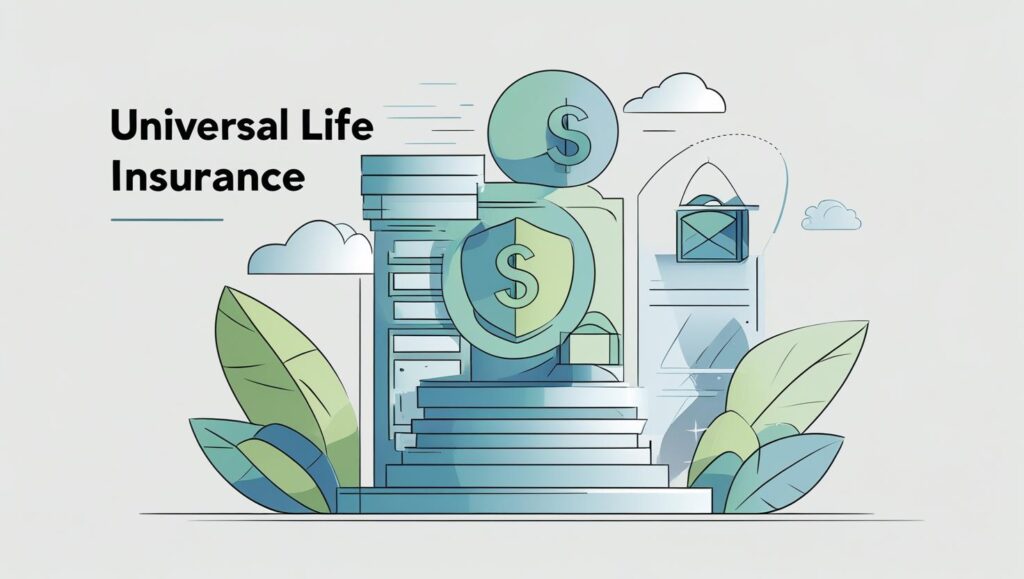
Overview
A flexible permanent life insurance policy with a cash value death benefit is called universal life insurance. Additionally, there is term life insurance, which offers protection for a predetermined amount of time. As long as premiums are paid, universal life insurance is perpetual. It is a desirable choice for people looking for long-term financial stability because it gives policyholders the flexibility to modify premiums and death benefits.
The Operation of Universal Life Insurance
There are two primary types of universal life insurance, which are permanent life insurance:
Death Benefit: The sum given to nominees when the policyholder passes away.
Cash Value: A portion of savings that increases over time in response to market performance or interest rates (depending on the type of UL policy).
Important Aspects of Universal Life Insurance
Flexible Premiums: This feature gives policyholders financial flexibility by allowing them to modify their premium payments within predetermined bounds.
Adjustable Death Benefit: If necessary, the death benefit can be reduced or raised (usually requiring medical underwriting).
Cash Value Growth: A percentage of the premium is deposited into an interest-bearing account. which has the ability to be borrowed against or withdrawn.
Insurance Cost (COI): Fees such as administrative expenses and mortality charges are subtracted by the insurer from the cash value.
The cash value increases according to market performance (variable or indexed UL) or at a fixed interest rate (traditional UL).
Universal Life Insurance Types
Universal life insurance comes in a variety of forms, each with special characteristics.
- Conventional Universal Life Insurance
- gives the cash value a fixed interest rate.
- Death benefits and premiums are modifiable.
- less dangerous than variable UL.
- The cash value growth of Indexed Universal Life Insurance (IUL) is linked to an index of the stock market, such as the S&P 500.
- protects against market losses by offering a floor and a cap on returns.
- has the potential to grow more than conventional UL.
- Policyholders of Variable Universal Life Insurance (VUL) can invest cash value in sub-accounts, which function similarly to mutual funds.
- greater risk but also greater potential for growth.
- No minimum return is assured.
- Guaranteed Universal Life Insurance (GUL) prioritizes the death benefit over the growth of cash value.
- Like term life, premiums are set, but the coverage is lifetime.
- little accumulation of cash value.

Benefits and Drawbacks of Universal Life Insurance
Benefits
- Lifetime Coverage: As long as premiums are paid, UL does not expire, in contrast to term life.
- Flexibility: Changing financial needs are accommodated by adjustable death benefits and premiums.
- Cash Value Growth: Loans or withdrawals may be made using the tax-deferred savings component.
- Tax Benefits: Cash value increases tax-deferred, and death benefits are typically tax-free.
Drawbacks
- More Expensive Than Term Life: Because of the cash value component, premiums are more costly.
- Complexity: To guarantee the policy’s continued funding, active management is necessary.
- Risk of Lapse: If the cash value is not enough to cover expenses, the policy may expire.
- Market Risk: Infrequently, subpar market performance may lower cash value (for VUL and IUL).
- For whom is universal life insurance appropriate?
- The ideal candidates for universal life insurance are those who desire:
- Desire permanent coverage: People who require lifetime protection for long-term dependents or estate planning.
- Aim for adaptability: people who want adjustable premiums because they expect their income to fluctuate.
- Desire cash value growth: People who want life insurance with a savings component.
- have used up all available funds in other tax-advantaged accounts: UL can be used by high-net-worth individuals for estate planning and tax-free growth.
- It might not be the best option, though, for people who: Only require short-term coverage (term life is less expensive).
- Choose low-maintenance, straightforward policies.
- cannot pay for more expensive premiums.
- Comparing Universal Life Insurance to Other Plans
- Comparing Whole Life and Universal Life Insurance
- Whole Life offers guaranteed cash value growth along with fixed premiums.
Although universal life is less predictable, it offers greater flexibility.
Term life insurance versus universal life insurance
Although term life insurance is less expensive, it expires after a predetermined amount of time.
Universal life is more costly but permanent.
Comparing Variable and Universal Life Insurance
Variable life offers more growth potential but also a higher investment risk.
More stability is provided by universal life (non-variable).
How to Pick the Best Universal Life Policy
Evaluate Your Financial Objectives: Do you require short-term or long-term protection?
Compare the Different Types of Policies: Depending on your risk tolerance, choose between traditional, indexed, or variable UL.
Verify the financial stability of the insurer: Select a business with a high rating (such as Moody’s or A.M. Best).
Recognize Fees and Charges: Keep in mind surrender fees, administrative costs, and mortality costs.
Speak with a Financial Advisor: A specialist can assist in customizing a policy to
Overall Thoughts
A flexible financial tool, universal life insurance offers lifetime coverage with an increase in cash value. Because of its flexibility, it appeals to people who expect their financial needs to change over time, but careful management is necessary to prevent policy lapses.
Prior to purchasing the plan, evaluate the alternatives, costs, and benefits to see if UL fits with your long-term objectives. Universal Life might be a wise option if you’re looking for long-term insurance with investment potential, but you should always speak with a financial advisor to make an informed choice.

No Responses